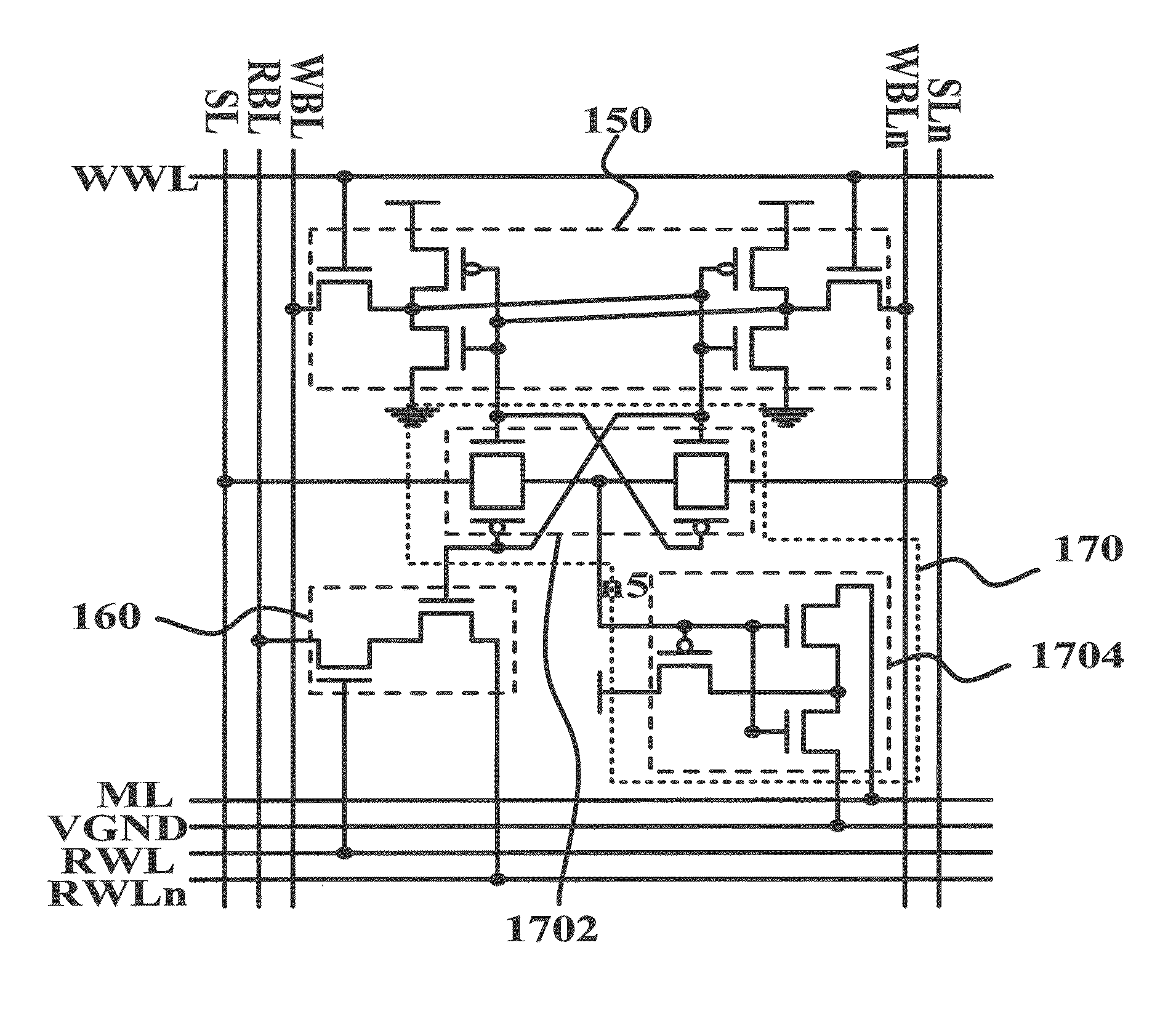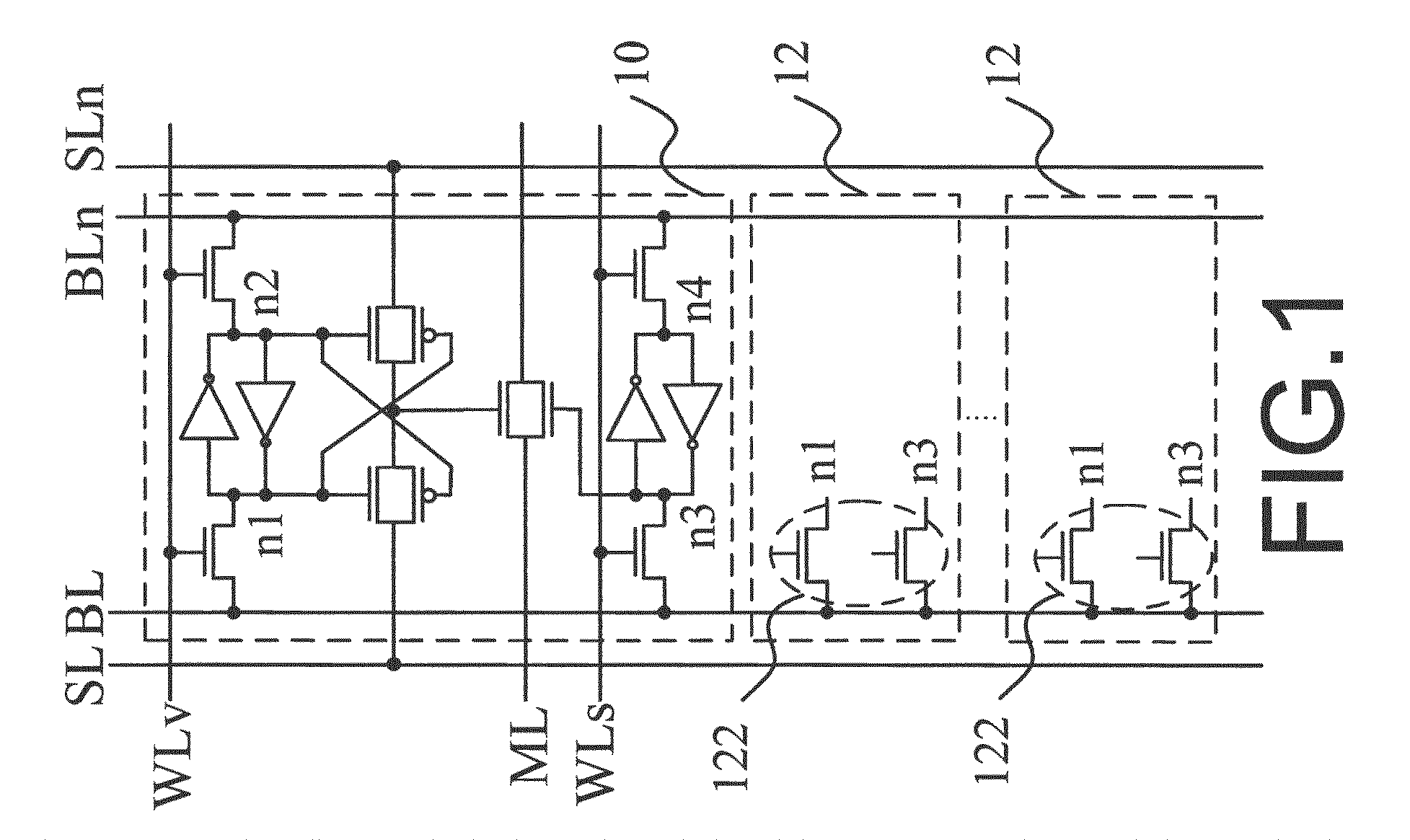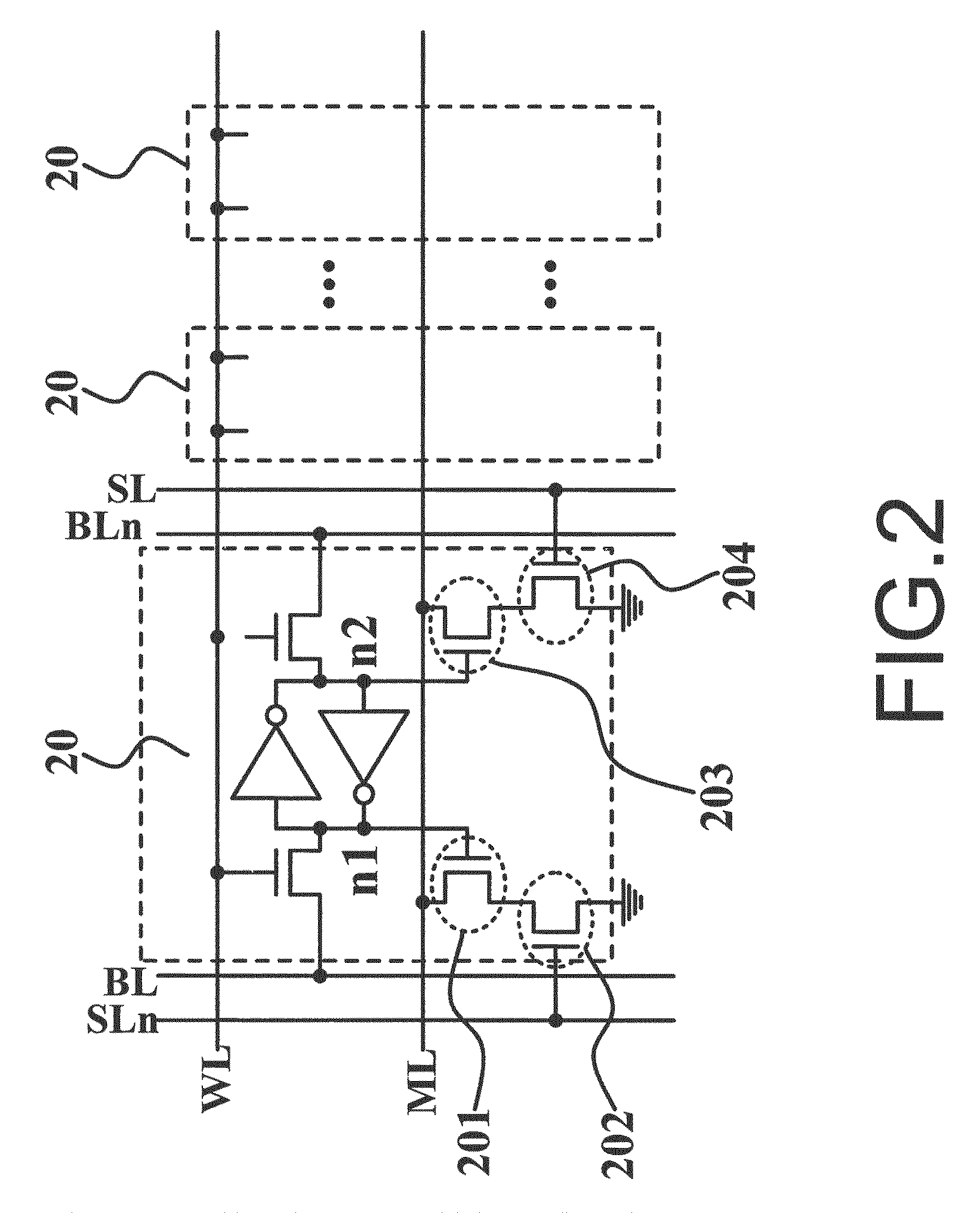Read and match circuit for low-voltage content addressable memory
a low-voltage content and addressable memory technology, applied in the logic circuit, information storage, static storage, etc., can solve the problems of increased noise, decreased static noise margin, and damage to stored data, and achieve the effect of increasing the static noise margin of reading stored signals of memory cells and improving stability
- Summary
- Abstract
- Description
- Claims
- Application Information
AI Technical Summary
Benefits of technology
Problems solved by technology
Method used
Image
Examples
first embodiment
[0041]The NAND-type CAM cell can apply to the NAND-type match-line circuit and the AND-type match-line circuit. Refer to FIG. 13 for the application of the present invention. The NAND-type CAM cell 180 may be the NAND-type ternary CAM cell 31 in FIG. 3 or the binary NAND-type CAM cell in FIG. 11, and the match output circuit 1802 may be the match output circuit 606 in FIG. 7 or the match output circuit 1404 in FIG. 11. In a pre-charge state, the control line clk of the match-line pre-charge circuit 70 has a logic value 0, and Node n1 has a logic value 1, and Node n2 has a logic value 0. Whether the bit matches the searched value determines whether the transistor of the match output circuit 1802 turns on or disconnects. When the bit matches the searched value, the corresponding transistor turns on. When the bit mismatches the searched value, the corresponding transistor disconnects. In an evaluate state, the control line clk has a logic value 1. If all the bits in the match output ci...
second embodiment
[0042]The NOR-type CAM cell can apply to the NOR-type match-line circuit. Refer to FIG. 14 for the application of the present invention. The NOR-type CAM cell 190 may be the NOR-type ternary CAM cell 32 in FIG. 3 or the binary NOR-type CAM cell in FIG. 12, and the match output circuit 1902 may be the match output circuit 1106 in FIG. 9 or the match output circuit 1704 in FIG. 12. In a pre-charge state, the control line clk has a logic value 0, and Node n1 has a logic value 1. Whether the bit matches the searched value determines whether the transistor of the match output circuit 1902 turns on or disconnects. If the bit matches the searched value, the corresponding transistor of the match output circuit 1902 disconnects. If the bit mismatches the searched value, the corresponding transistor of the match output circuit 1902 turns on. In an evaluate state, the control line clk has a logic value 1, and Node n2 has a logic value 0. If all the bits in the match output circuit 1902 match t...
third embodiment
[0043]The NAND-type CAM cell and the NOR-type CAM cell may also be used in an identical match line simultaneously. Refer to FIG. 15 for the application of the present invention. The NAND-type CAM cell group 200 may be the same as that shown in FIG. 13, and the NOR-type CAM cell group 210 may be the same as that shown in FIG. 14. In a pre-charge state, the control line clk has a logic value 0; Node n1 has a logic value 1; Node n2 has a logic value 0; Node n3 has a logic value 1; Node n5 has a logic value 0. The NAND-type CAM cell group 200 and the NOR-type CAM cell group 210 simultaneously undertake bit matching activities. In an evaluate state, the control line clk has a logic value 1. If all the bits of the NAND-type CAM cell 200 hit the searched values, Node n2 is shifted to a logic state of 1. If the bits of the NAND-type CAM cell 200 do not all hit the searched values, Node n2 is maintained at a logic state of 0, and Node n5 also has a logic value 0. When Node n1 is shifted to a...
PUM
 Login to View More
Login to View More Abstract
Description
Claims
Application Information
 Login to View More
Login to View More - R&D
- Intellectual Property
- Life Sciences
- Materials
- Tech Scout
- Unparalleled Data Quality
- Higher Quality Content
- 60% Fewer Hallucinations
Browse by: Latest US Patents, China's latest patents, Technical Efficacy Thesaurus, Application Domain, Technology Topic, Popular Technical Reports.
© 2025 PatSnap. All rights reserved.Legal|Privacy policy|Modern Slavery Act Transparency Statement|Sitemap|About US| Contact US: help@patsnap.com



